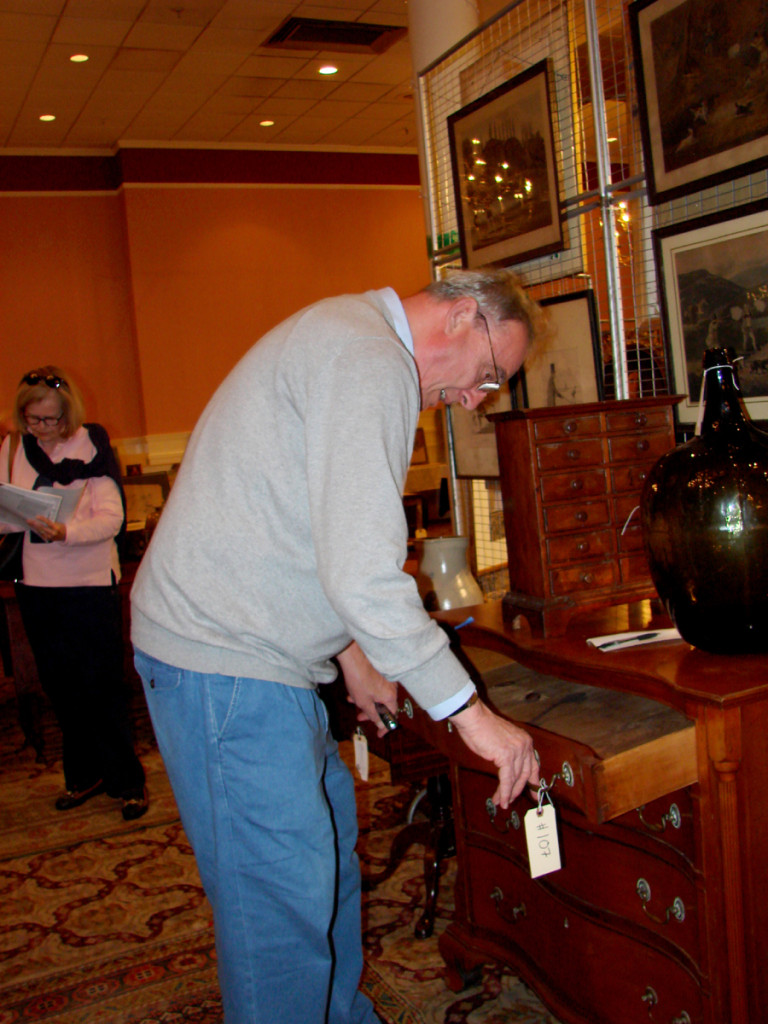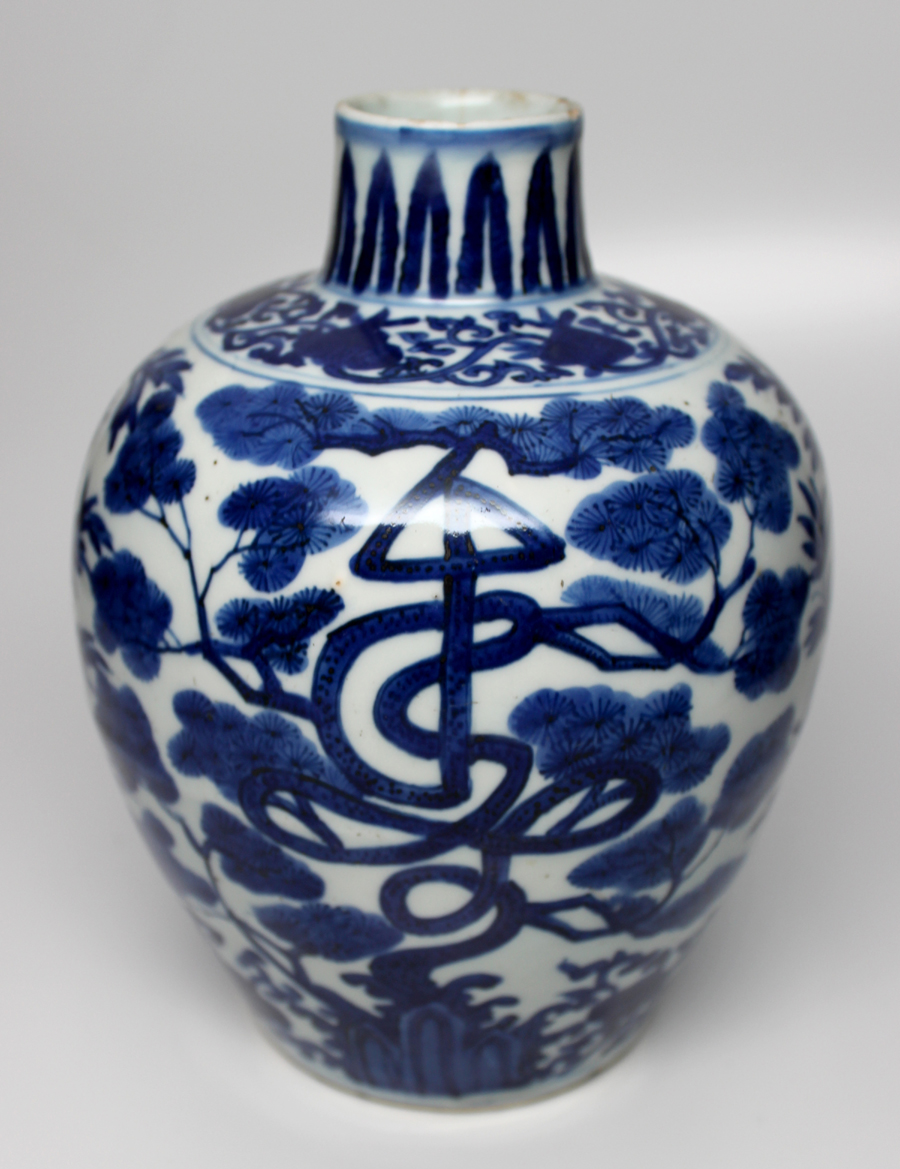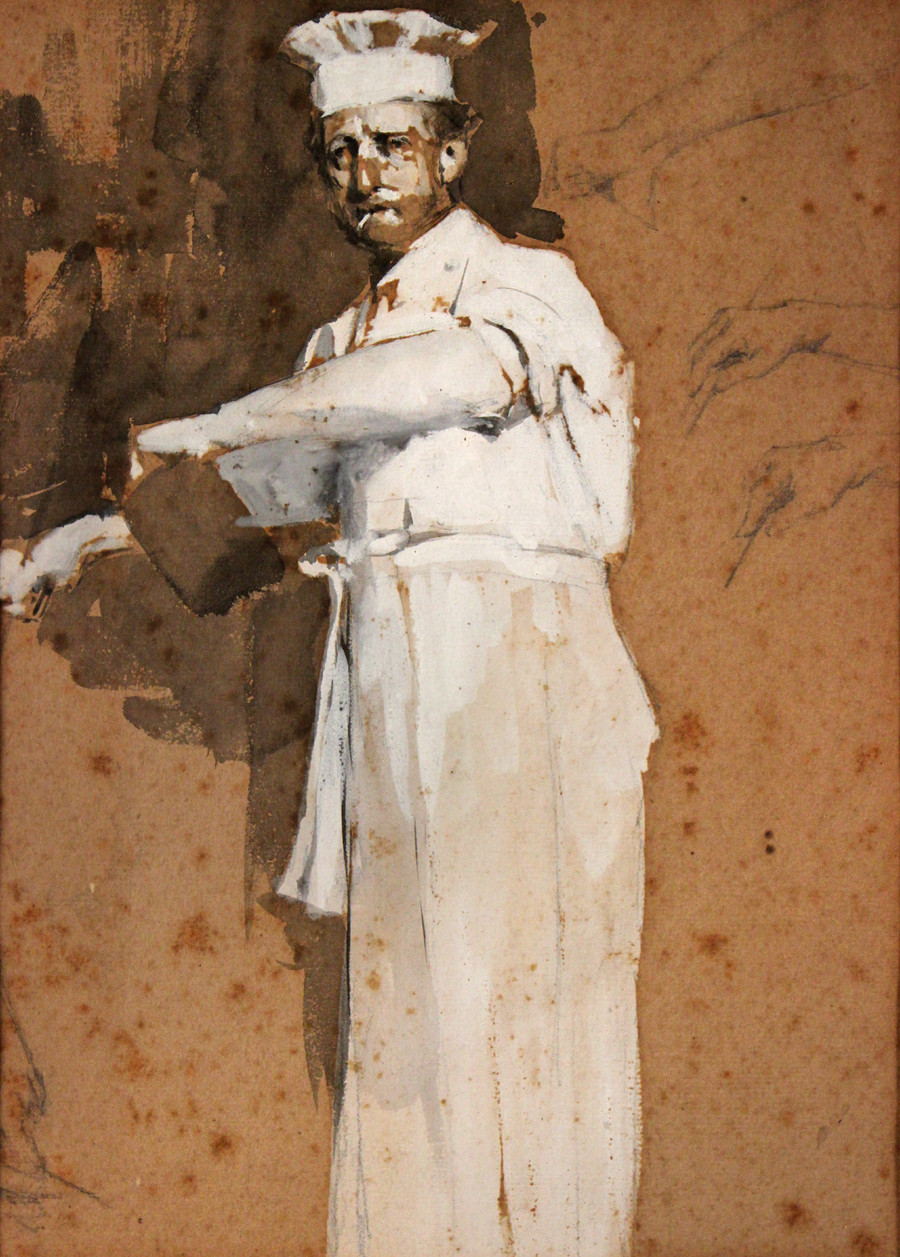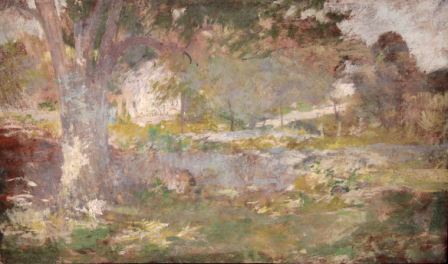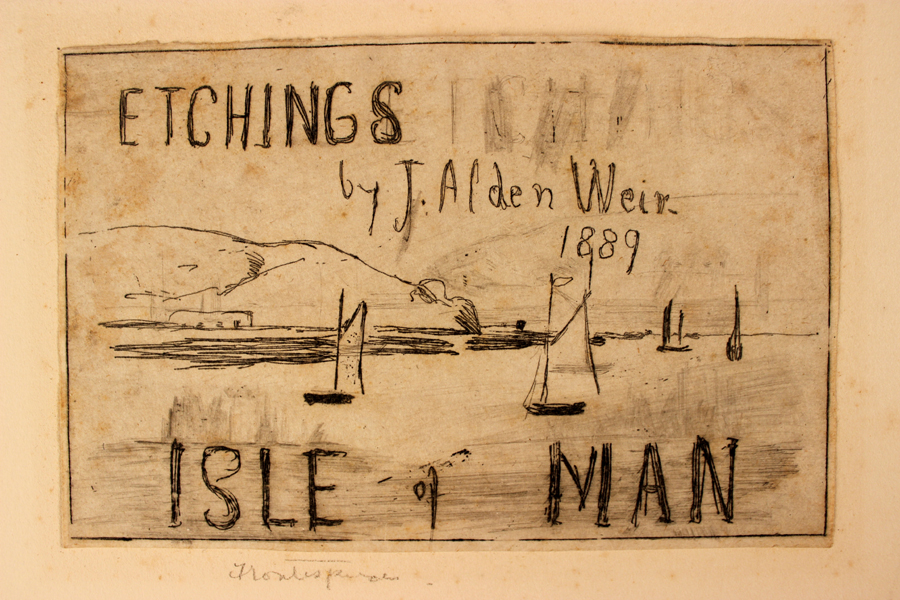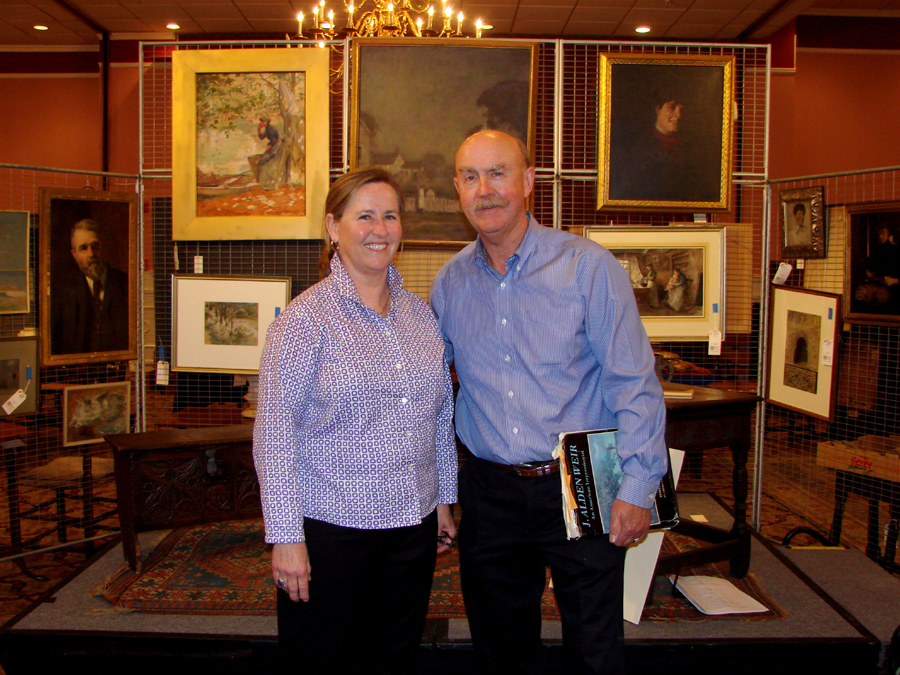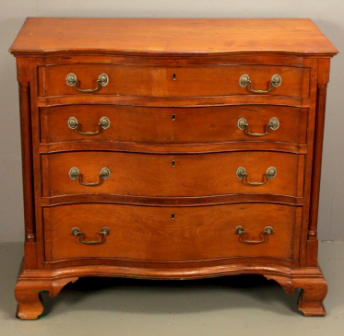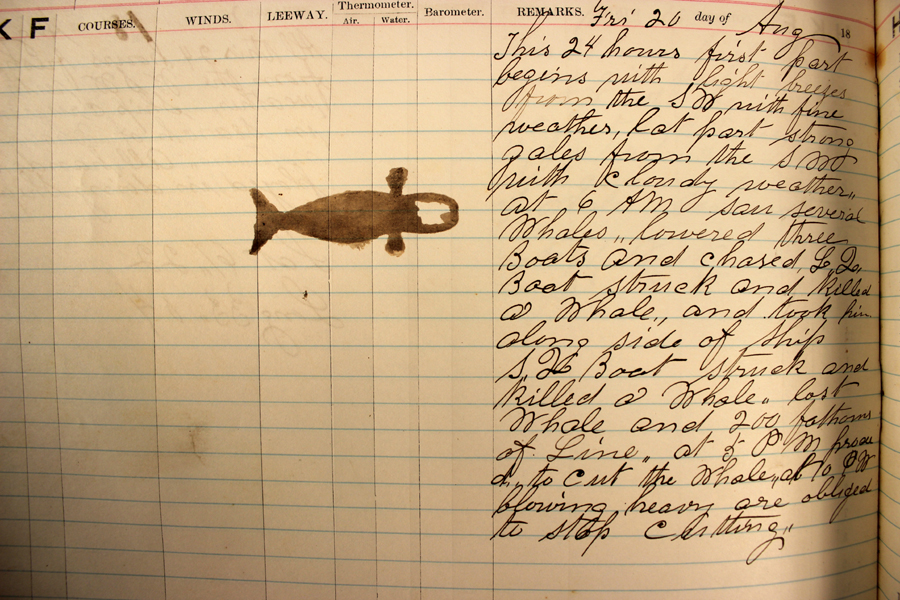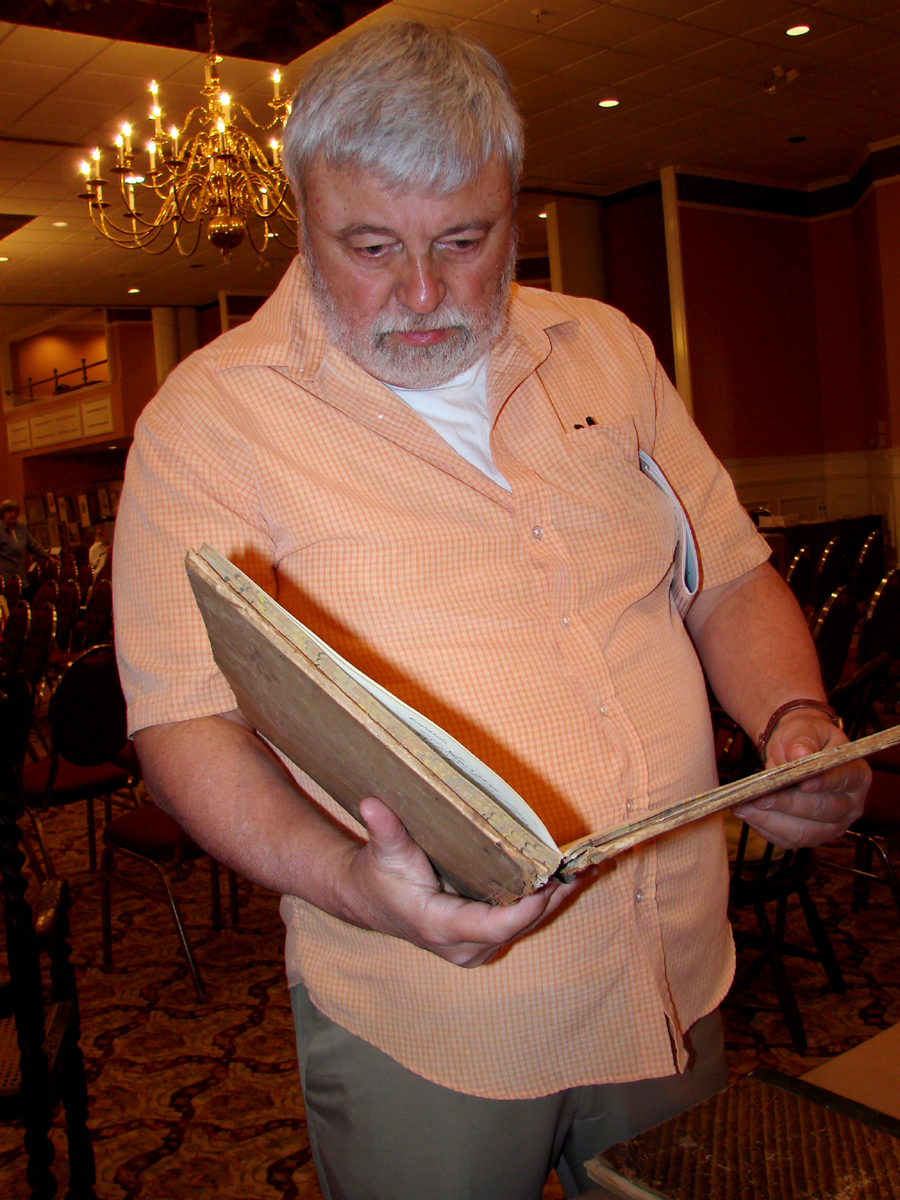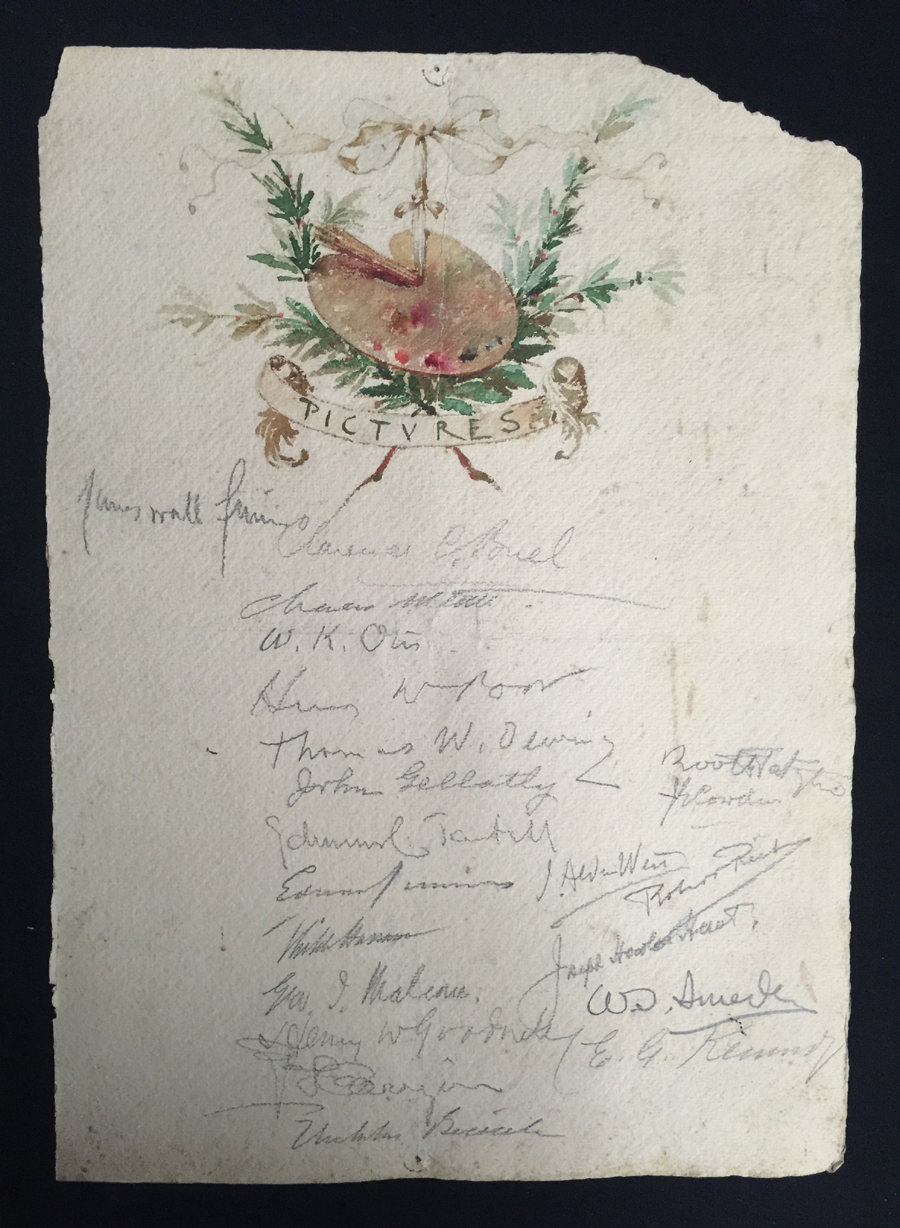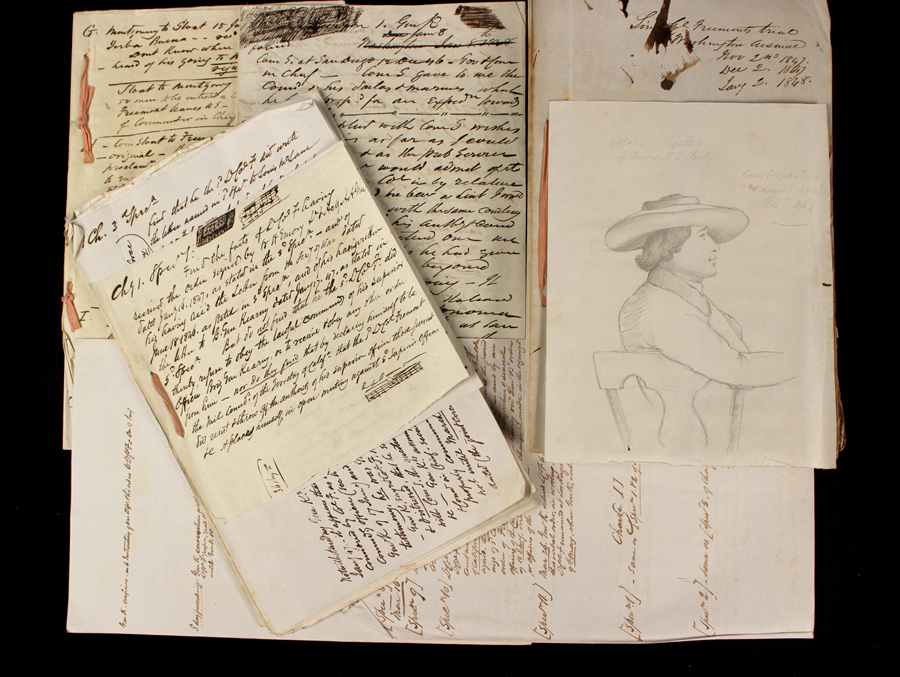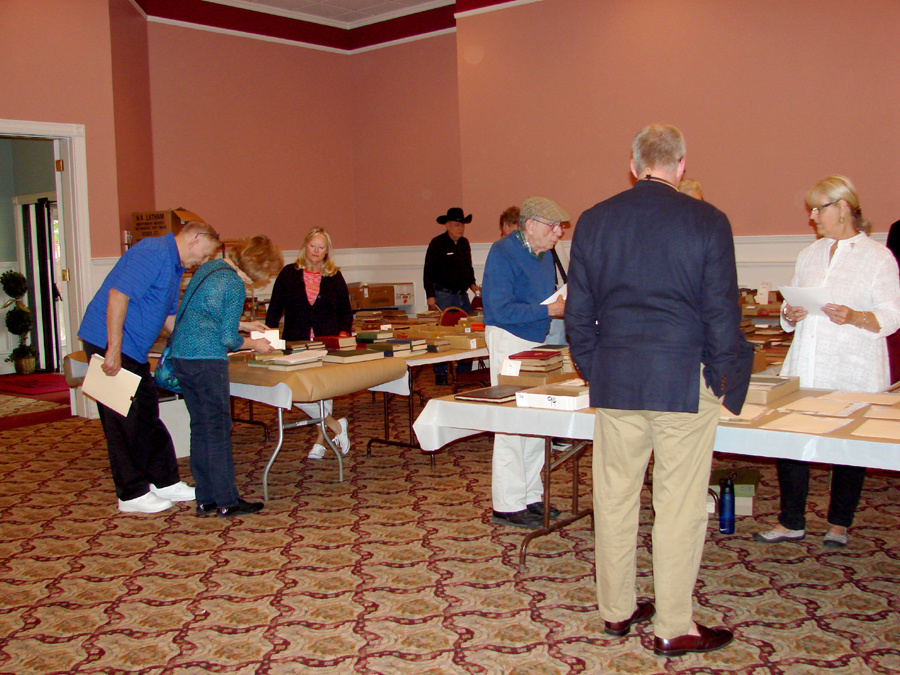Review by Rick Russack, Photos Courtesy Boyd Auctions
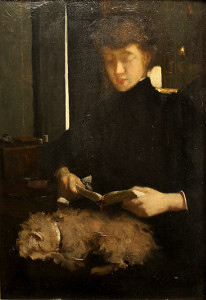
J. Alden Weir’s portrait of his daughter Caroline, aka “Caro,” and her dog Gyp, was the top selling piece of Weir artwork. It brought $25,300.
PORTSMOUTH, N.H. — J. Alden Weir (American, 1852–1919) was one of America’s leading Impressionists and was a member of “The Ten,” a group of like-minded artists.
Eliot, Maine-based auctioneers Maureen and John Boyd auctioned collections belonging to Weir family descendents May 20–21 at Portsmouth’s Frank Jones Center. Numerous pieces of original artwork by Weir and other family members were included, as was furniture, Asian antiques and woodblock prints, as well as a library that reflected the family’s heritage and interests. There were letters by Weir to his daughter, Caro, letters from artists and important historical books and documents. Artwork included several works by Weir’s friends and associates. Many early books were sold, as were manuscripts that belonged to Colonel Rufus Baker, Weir’s grandfather-in-law, a prominent pre-Civil War ordnance officer.
After the sale, Jeff Cooley of the Cooley Gallery, Old Lyme, Conn., said, “The sale was remarkable, both in the quality of what was sold and the way it was conducted. Boyd did a terrific job. Given how easy it is these days to bid online, I don’t go to many auctions. But I’m glad I went to this one — there were many treasures. Weir was the first true American Impressionist, and there was rare stuff in this auction, like the many Weir etchings, that you just don’t see. I don’t do much with works on paper, but those were scarce. He was a very important painter. The Met did an exhibit of Weir’s paintings years ago and one of the finest paintings they own was done by Weir. I was able to buy a few things but was outbid on some things that I would have liked to have. With the exception of the highest priced item, ‘Caro and Gyp,’ almost everything sold to dealers in the room. There were several etchings by Caro Weir, Julian’s daughter. They’re not common but there’s no particular market for them. She also did some nice pastels of the Old Lyme area.”
The painting that Cooley referred to, “Caro and Gyp,” depicted Weir’s daughter Caroline and her dog, Gyp. It was the highest priced artwork in the sale, bringing $25,300. An unfinished self-portrait by Weir sold for $9,350. A study for a landscape also brought $9,350. His portrait of his first wife, Anna, achieved $2,200, and a scene of beached sailboats in Nassau fetched $4,400. A watercolor of a barn interior achieved $330, and “Tile Club Chef,” a gouache, realized $2,750. There were two pastel landscapes. One reached $1,375 and the other, $1,100. A watercolor, “The Hunter,” achieved $1,750.
Cooley mentioned that etchings by Weir are not common, and the sale included several he had done as well as several by Caro Weir. His etching “Study for a Woman’s Head” was the highest priced, bringing $413. Finishing right behind was “Dogs at the Hearth,” $385. Prices for Weir’s etchings were generally under $250, and some were sold in lots of three and four, bringing between $495 and $715 per lot. The sale offered several etchings from Weir’s series done on the Isle of Man, one of which is in the collection of the Metropolitan Museum of Art. They, too, sold in lots of three, generally in the range of $200 per lot. Etchings by Caro were sold in large lots. For example, a folio containing 35 of her etchings went for $330.
Works by several of Weir’s friends were included in the sale along with a unique piece of ephemera. A hand painted dinner club menu, dated April 1905, was signed by 35 attendees, including Childe Hassam, Edmund Tarbell and Albert Paine. It sold for $1,100. An etching by Frank Duveneck (American, 1848–1919) of a scene in Venice achieved $1,540. A pencil sketch of a ship in the Venice harbor by John Twachtman (American, 1853–1902), reached $1,980, and an oil by Edward Gregory Smith (American, 1880–1961) realized $6,600.
Paintings by Weir’s family were also offered. A self-portrait by William Rufus Baker, probably his uncle, realized $193, and a lot with seven of Baker’s sketch books brought $165. Two pen and ink drawings by Robert Walter Weir, Julian’s father, were offered; one brought $1,760 and the other made $1,100. Julian’s middle daughter, Dorothy Weir Young, (American, 1890–1947) was the only one of his three daughters to study under her father. A still life watercolor she did reached $138, and an oil of phlox went for $275. A watercolor of Florence by Julian’s second wife, Ella, earned only $55.
Part one of the three-session sale was devoted to books and manuscripts. One of the interesting manuscript items came from Colonel Baker. He was J. Alden Weir’s grandfather-in-law, twice over, as when Weir’s first wife, Anna, died after childbirth, Julian married her sister Ella a few months later. Baker was a prominent ordnance officer and a West Point graduate, retiring just before the Civil War. He served as one of the judges during the 1848 court-martial of Major John C. Fremont, known at the time as the “Great Pathfinder.” Baker’s papers included a handwritten account of the court-martial proceedings and sold for $6,875 to rare book dealer William Reese of New Haven, Conn. After the sale, the underbidder, Jim Kochan, a military historian and dealer from Frederick, Md., discussed the Baker papers with Antiques and The Arts Weekly.
Kochan had bought a series of lots containing numerous letters written by Baker. “Baker was a good officer and an interesting guy. Retired before the Civil War began, not so many people know about him. He was an ordnance officer involved with weapons development. He was instrumental in converting the army from flintlocks to percussion weapons. I wanted the Fremont court-martial papers, which included contemporary newspaper clippings about the trial and a pencil sketch, but I wasn’t certain they contained information that would add to what has already been written, so I let them go.”
Reese also purchased the most expensive book in the sale, Historical Account of The Expedition Against The Ohio Indians in the Year 1764. It was written by William Smith and cataloged as having been published in London. Jim Arsenault, a rare book dealer from Arrowsic, Maine, told Antiques and The Arts Weekly that it had actually been published in Philadelphia. The book sold for $13,200 although it was missing the map that should have been with it as well as two plates that had been drawn by Benjamin West. The book was based upon battles of Pontiac’s War and is also considered a classic of Indian captivity tales.
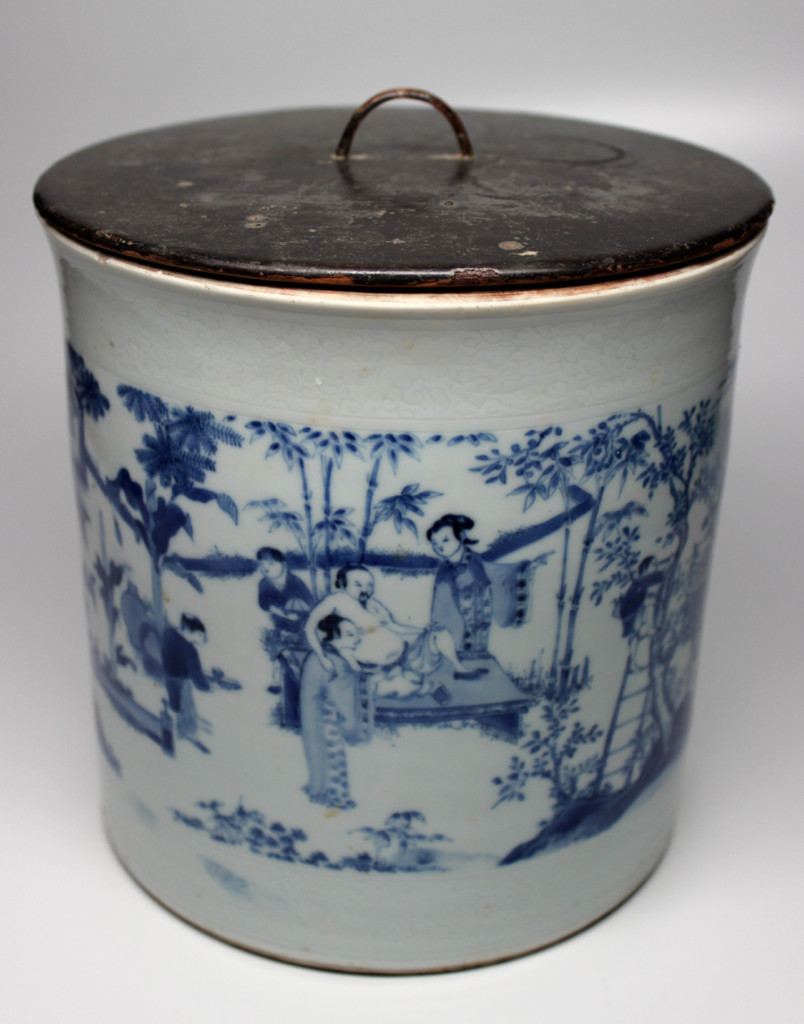
The top lot in the sale was a Chinese blue and white Ming period brush pot that reached $62,700. It probably dated to the Fifteenth Century.
The manuscript portion of the sale included numerous pieces of correspondence to and from members of the Weir family. A letter to Carolyn Weir by Childe Hassam, 1910, realized $550. An autograph album belonging to Weir’s first wife, Anna, achieved $1,320. It included signatures of Millard Fillmore, Daniel Webster, Winfield Scott and Henry Wadsworth Longfellow, among others. Two important sailing ship logs were offered. The log for the whaling bark Nile, sailing from New London in 1875, with whale stamps, brought $4,950 and the log book from the schooner Era, which sailed from New London in 1889 and returned in 1892, reached a final price of $5,500. A presidential discharge order signed by Abraham Lincoln went for $4,675, six letters written by General Winfield Scott and others brought $2,200, and a large collection of letters belonging to then-Major Rufus Baker fetched $2,420.
The highest prices of the sale were achieved Saturday when antiques from the home were sold and the two most successful lots of the three sessions were pieces of early Chinese ceramics. Reaching the highest price of the entire auction was a Chinese blue and white brush pot. Simply cataloged as an “Asian blue and white ceramic brush pot,” the brush pot was a Ming dynasty rarity dating to the Fifteenth Century, according to Jeff Waddell of China Trade Restorations, Kittery, Maine. It realized $63,250. The second high point, according to Waddell, was a Chinese Wanli period vase that earned $27,500. Wanli was the 13th emperor of the Ming dynasty, reigning from 1572–1620. Also doing well in this part of the sale was a Gothic-style Italian refectory table that earned $10,450 and a Sabatos hooked rug by Marion Volk. Sabatos rugs were products of a small craft industry organized in 1901 by Douglas and Marion Volk, New York artists who summered in Maine. Few examples of the rugs are known and this one reached $7,700.
All prices include the buyer’s premium. For more information, 207-439-6641.

